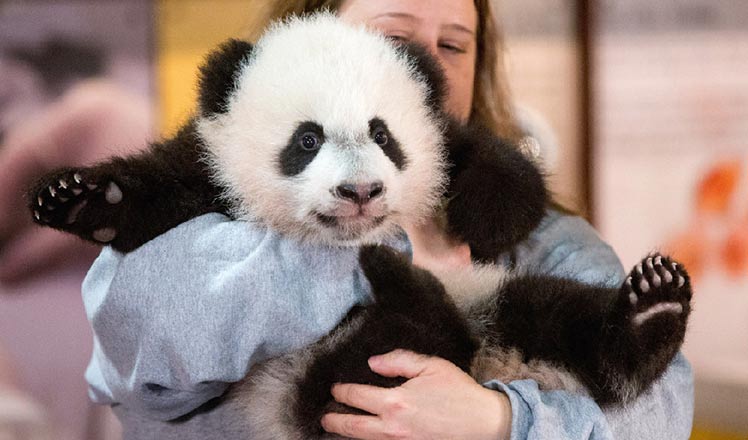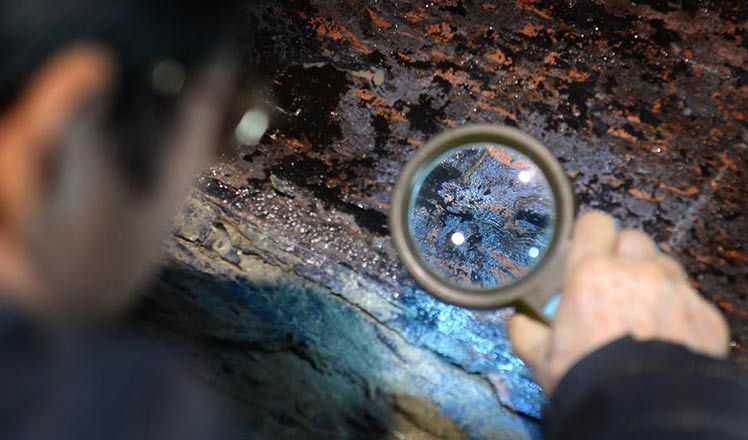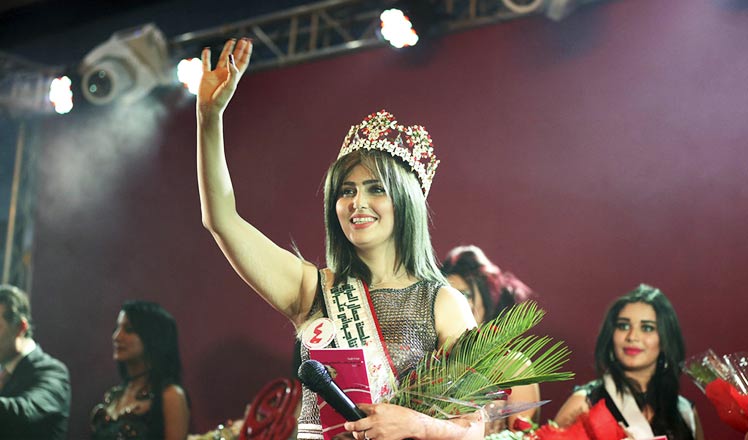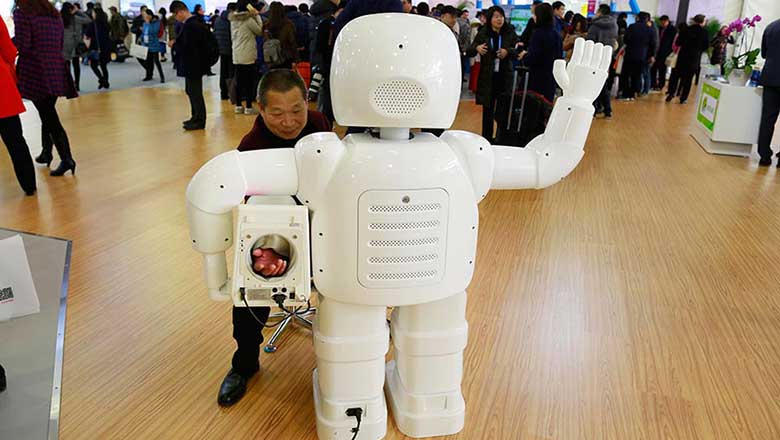Twice as nice or double trouble?
Updated: 2015-12-22 07:56
By Cheng Yingqi(China Daily)
|
||||||||
A Chinese company plans to replicate cattle, racehorses, sniffer dogs and even departed family pets at 'the world's largest cloning facility', but its success will depend upon whether the public can swallow its longstanding distrust of the controversial technique. Cheng Yingqi reports.
Strawberries, bananas, pawpaw ... anyone who has eaten these fruits recently will have tasted cloned foods, which have been sold unlabelled at supermarkets across the world since the 1980s.
While people seem happy to eat cloned fruits, many draw the line at consuming cloned meat, so when the Boyalife Group in Wuxi, Jiangsu province, announced an ambitious plan to build what it described as "the world's largest cloning factory", the news made a big splash.
On Nov 20, the company announced a joint venture with the Sooam Biotech Research Foundation in South Korea to invest up to 3 billion yuan ($462 million) to produce 1 million cloned beef cattle embryos, raised for meat rather than milk production, to supply Chinese dining tables, stirring up controversy both at home and abroad.
Construction of Boyalife's cloning plant was 70 to 80 percent complete when the company announced the joint venture. The facility, which is scheduled to start operations in the first half of next year, will be dedicated to the mass production of cloned beef and milk cattle, sniffer dogs, racehorses and animals for use in medical experiments.
That means, if everything goes to plan, the public will be able to order a cloned steak in restaurants sometime within the next 12 months.
"Cloned beef definitely tastes better than any beef you can find on the market. My children and I have tried it," said Xu Xiaochun, Boyalife's CEO, who added that the aim of cloning beef cows instead of allowing natural births to occur is to raise the number of "elite" cows in China within a short period of time.
"Stock farming developed over hundreds of years in Europe, the United States, Japan and South Korea, so those countries have managed to propagate a large population of elite cows, which taste much better than domestic Chinese yellow cattle. "It would be a prolonged process if we just imported a better breed and waited for them to propagate naturally, so a faster way is to clone them," he said.
Better beef, lower cost?
The market price of Asian cattle breeds the company plans to clone, such as Wagyu from Japan and Hanu from South Korea, is about 100,000 yuan per head. That means the economic benefits are easy to calculate: a 200 million yuan investment - equal to the amount required to build the entire infrastructure for cloning 100,000 cows - is only enough to buy 2,000 head of cattle. A similar scale of investment in cloning would expand the bovine population base by fifty times and also produce numerous offspring.
"Our aim is to provide people with better beef on their tables at a lower cost," Xu said. "Plant cloning created great opportunities for the development of companies such as Monsanto, but in China the market opportunities lie in meat supplies."
However, the general public seems reluctant to buy into that theory. A small-scale survey conducted by a journalist from Science and Technology Daily in Beijing found that 90 percent of respondents said they would never eat cloned meat.
"To gain approval for the use of cloned animals would be a very drawn-out process, so when I heard this news I was very surprised," Han Lanzhi, a specialist in genetically modified organisms' safety at the Chinese Academy of Agricultural Sciences, told Agence France-Presse when she was asked about Boyalife's cloning plan.
"There must be strong regulations, because as a company pursuing its own interests, they could very easily do other things in the future," she said.
Regulatory concerns
In truth, the regulations on clones are no stricter than those for regular livestock. The risk assessment of meat and milk from clones and their offspring started at the turn of the century, and the research conducted by different countries and agencies reached the same conclusion: Cloned cattle, pigs and goats and their offspring pose the same low level of risk as conventionally bred animals.
In 2001, the US Center for Veterinary Medicine, part of the Food and Drug Administration, began researching the issue, and asked livestock producers to voluntarily keep clones and their offspring out of the food chain until it could be fully evaluated.
The results were published in a report in 2006, and updated in 2008. Both documents said meat and milk from cloned cattle, pigs and goats and their offspring are "as safe as the food we eat every day". The FDA also indicated that it would not require cloned foodstuffs to carry labels to inform consumers about the source.
Similar assessments undertaken by Japan's Food Safety Commission, the United Kingdom Food Standards Agency, the Food Safety Authority of New Zealand and several other countries, all replicated the FDA's findings.
So far, China has not published any official risk assessments on the use of cloned animals as food, and there are no specific regulations requiring special quarantine or labeling of those animals. "Our cloned beef will go through the same standard inspection and quarantine procedures required for all other animal products, which will be enough to ensure it is safe to eat," Xu said.
"The thing that causes consternation among the public is that some people may confuse cloned and genetically modified foods," he added.
Pros and cons
Generally, cloning is a four-step process: Scientists take an egg from a female animal and remove its nucleus, which contains DNA - the animal's genetic information; they then remove the nucleus from a body cell of the animal they wish to replicate and embed the nucleus in the egg taken from the female animal; the egg is then fertilized so it becomes an embryo, which is finally implanted into a mother that will carry it to term and deliver it just like her own offspring.
"The difference between cloning and genetic modification is whether you change the gene of the cell before you put it into the enucleated egg," said Zhao Jianguo, a professor at the Institute of Zoology affiliated with the Chinese Academy of Sciences.
"If the scientists are not introducing an exterior gene from another breed or editing the gene, cloning becomes no more than a process of asexual reproduction, which produces identical copies of the parent," he said. "Hence cloned products are safer than GM".
However, Zhao believes cloning is not the most economical way of producing farming animals in most cases. "For example, the cloning efficiency in pigs is only around 1 to 3 percent, but the cost of cloning a pig in my lab is about 300,000 yuan," he said. "Until the technology is well developed in commercial terms, it will only be economically feasible to clone individuals that have exceptionally excellent properties, rather than using cloning as a tool for mass production."
Another major concern is animal welfare, because some clones may suffer developmental disorders. In the case of cattle, the birth weight of some cloned offspring could be as much as 70 kilograms, twice the average weight of naturally bred calves, a phenomenon known as large offspring syndrome, according to Zhao.
In September, the European Parliament imposed a five-year ban on meat or other products from cloned animals and their offspring, including imports from outside the European Union. The supporters of the ban claimed that cloning would harm animal welfare.
Where are the boundaries?
In addition to mass-producing food, cloning technology has a more expensive application: to replicate precious animals, from beloved dead pets to - in the most extreme cases - extinct species.
In 2005, South Korean stem cell scientist Hwang Woo-suk and his team succeeded in creating Snuppy, the world's first cloned dog, an identical copy of an Afghan hound, in a laboratory at the Seoul National University. A year later, though, Hwang fell from grace after he was found to have falsified lab reports and research results, including those related to his claim that he had cloned human embryos. Hwang was fired by the university, but later independent investigations determined that Snuppy was a real clone.
Hwang later became chief technology officer at Sooam Biotech, which, among other business ventures, clones dead pet dogs at a price of $100,000 each. Most of the clients are from the US, according to the company's website.
Lee Byeong-chun, Hwang's former colleague at the Seoul National University, also started a dog-cloning business with a company called RNL Bio Co in the South Korean capital.
In 2011, Hwang moved to further rebuild his reputation, by developing a new technique of cloning coyotes, and produced eight of them.
The success restored his prestige to some extent, and in 2012, Sooam Biotech signed a contract with Russia's North-Eastern Federal University in Siberia to attempt to clone a mammoth, an ancient elephant-like mammal that's been extinct for about 10,000 years.
"There are differing views on the boundaries of cloning. Some believe scientists should not try to clone extinct animals because they do not fit the natural environment today, while others believe that we should recover them because it was human activity that led to their extinction," Xu, from Boyalife, said.
"I think it is OK if we keep cloning within the realms of scientific research - we clone extinct animals to see what the technology can do, but we cannot bring back a whole species," he said.
Zhao, from the Institute of Zoology, said human cloning is a line that scientists should not cross, but the cloning of endangered species could help to preserve DNA diversity.
In the early 2000s, Chinese scientists proposed cloning pandas, but the plan was rejected by a number of experts who believed large-scale cloning would further damage the animal's population diversity.
In 2003, China announced it was building a gene bank for pandas that would include cell samples of five dead pandas and 161 living ones. Although panda cloning is still not technically possible, Zhao foresees it playing a role in the future.
"For endangered animals such as pandas, we can keep a record of their DNA information, so if the population is too small to maintain DNA diversity in the future, we can clone some individuals to protect the species," he said.
Sun Yuan contributed to this story.
Contact the writer at chengyingqi@chinadaily.com.cn
(China Daily 12/22/2015 page6)
- Iraq holds its first beauty contest in 40 years
- Libyan factions sign UN deal to form unity government
- World's refugees and displaced exceed record 60 million
- No specific, credible terror threats against US: Obama
- UN Security Council adopts resolution to cut off Islamic State funding
- California shooters' ex-neighbor charged with supporting terrorists

 Life of a family amid Beijing's red alert smog
Life of a family amid Beijing's red alert smog
 The world in photos: Dec 14 - 20
The world in photos: Dec 14 - 20
 Beijing chokes under red alert smog once again
Beijing chokes under red alert smog once again
 Jiangsu's dried bean curd packed with history and taste
Jiangsu's dried bean curd packed with history and taste
 External coffin lid of 2,000-year-old Chinese tomb opened
External coffin lid of 2,000-year-old Chinese tomb opened
 First Miss Iraq named in decades
First Miss Iraq named in decades
 Iraq holds its first beauty contest in 40 years
Iraq holds its first beauty contest in 40 years
 Highlights at the Light of the Internet Expo
Highlights at the Light of the Internet Expo
Most Viewed
Editor's Picks

|

|

|

|

|

|
Today's Top News
Shooting rampage at US social services agency leaves 14 dead
Chinese bargain hunters are changing the retail game
Chinese president arrives in Turkey for G20 summit
Islamic State claims responsibility for Paris attacks
Obama, Netanyahu at White House seek to mend US-Israel ties
China, not Canada, is top US trade partner
Tu first Chinese to win Nobel Prize in Medicine
Huntsman says Sino-US relationship needs common goals
US Weekly

|

|







